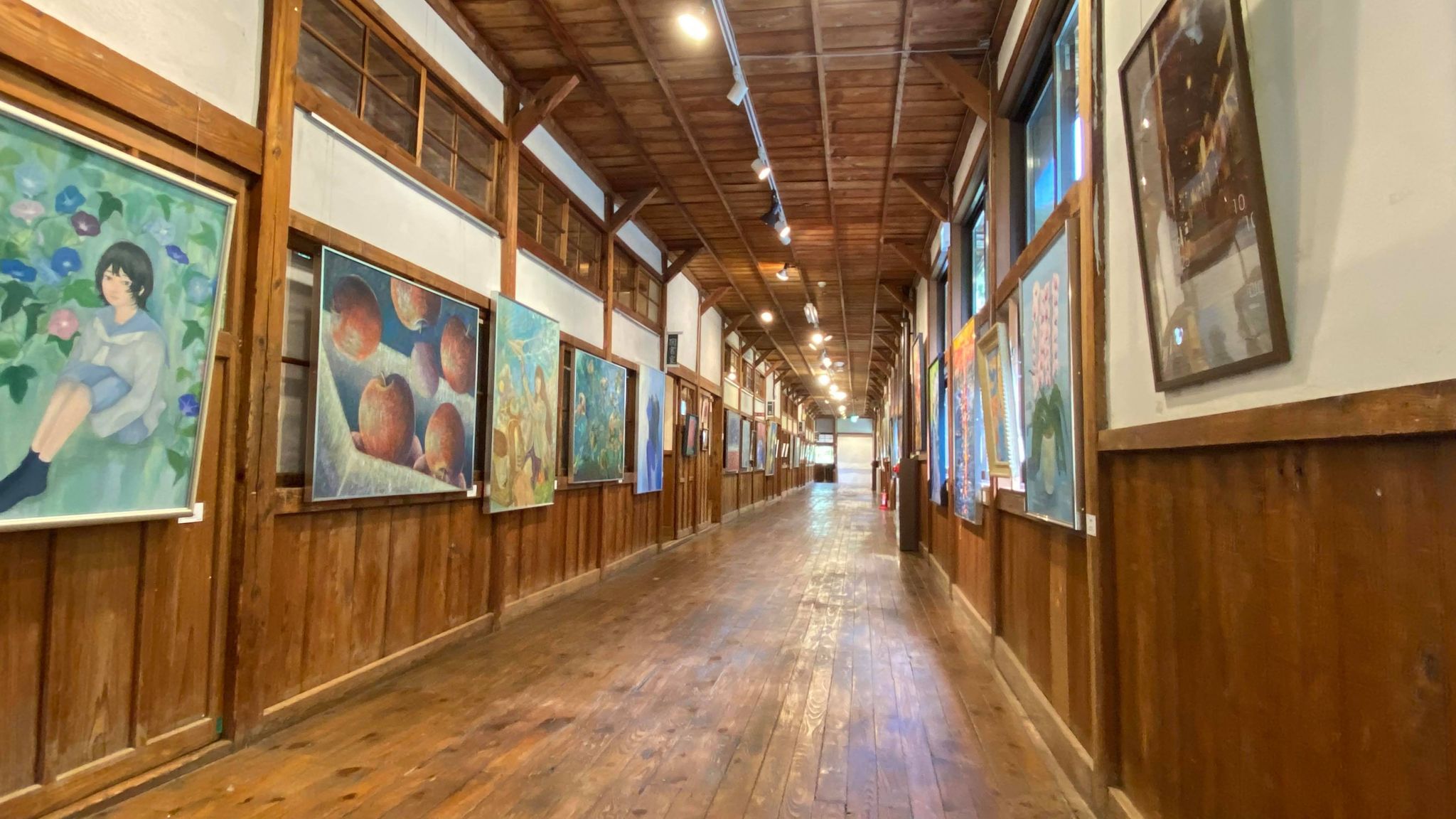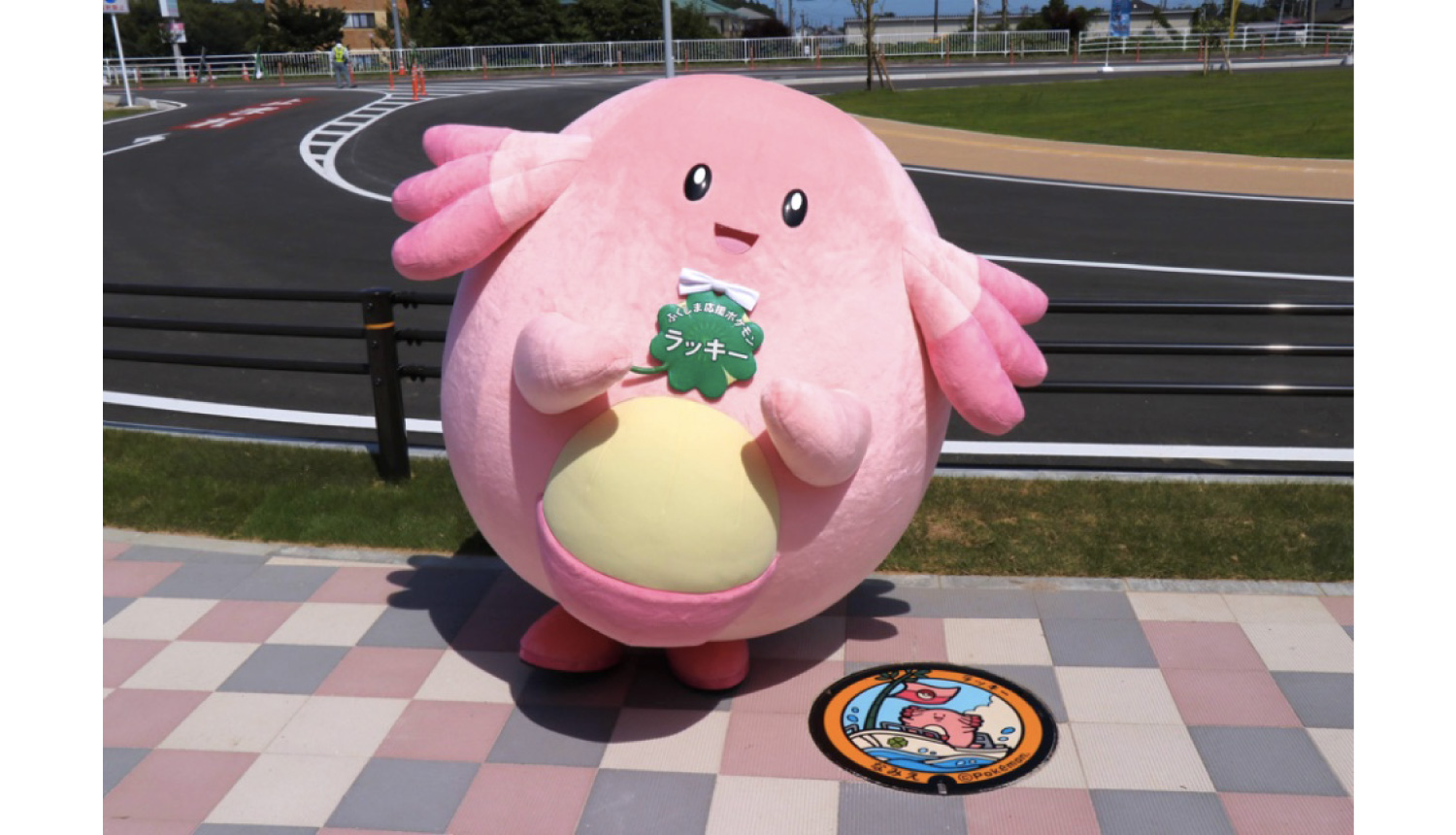Fukushima 50 Cast and Director Premiere Film About the Nuclear Disaster to Fukushima Locals
26.January.2020 | MOVIE
Fukushima 50 is an upcoming film based on the non-fiction book On the Brink: The Inside Story of Fukushima Daiichi by Japanese journalist Ryūshō Kadota. It will be released on March 6, 2020.
The film will discuss the Fukushima Daiichi nuclear disaster that occurred after the 9.0 magnitude Great East Japan Earthquake on March 11, 2011 which stands as the largest ever earthquake recorded in Japanese history.
The film’s title refers to the pseudonym given by the media to the 50 employees that remained on the site after the nuclear power plant disaster. It will show the reality that the group faced that only they knew from being inside the plant and in the face of death.

Japanese actors Kōichi Satō and Ken Watanabe, who star in the upcoming film, held a campaign where they visited various locations across Fukushima Prefecture. Satō, as well as the film’s director Setsurō Wakamatsu and executive producer at KADOKAWA Shinichiro Inoue, made a courtesy call to Tomioka, a town which is still difficult for residents to return to. Tomioka is in fact one of the settings featured in Fukushima 50, and so before the films releases in March 2020ー10 years since the disaster struckーthe cast and staff went to pay their respects to the locals still living there.
The film premiered at Koriyama Theatre in Fukushima where Kōichi Satō, Ken Watanabe, and director Setsurō Wakamatsu all made an appearance. The event began with cast and staff announcing that they first wanted the people of Fukushima to watch the film before they made their comments. This was the first time the film had been shown to the general public, less than two months from its official release.

Satō, Wakamatsu, and Inoue’s appearance in Tomioka took place on January 22. Executive producer Inoue was the first to greet the people. “We have come to Tomioka today to officially announce to you the completion of the film Fukushima 50. We hope everybody, including the mayor, will see it as soon as soon as possible.” The director Wakamatsu followed, saying: “We are gratefully indebted to the people of Tomioka for letting us interview you before the film shoot. We wish for you all to see it and for it to be a film you believe the rest of the world should see.”
Satō said: “I believe there will be many people who look back on [the incident] and remember it like it was yesterday rather than something that happened a long time ago. I think there will be people who do not wish to remember as well. However, the film needed to be powerful in order for the memories of the incident to not fade away. The film may bring back pain, but I ask you to view the film as necessary so we can pass down the reality of what happened to future generations.”
Director Wakamatsu commented on Yonomori, a park in Tomioka and one of the filming locations which people are currently prohibited from entering due to the high radiation levels. “We filmed a crucial ‘cherry blossom scene’ there. Cherry blossoms are a thing of beauty, but it was really complicated when I thought about how these cherry blossoms cannot be seen by anyone.” Satō weighed in on this point. Speaking about his character Toshio Izaki, he said: “I don’t know to what extent his complex feelings are conveyed regarding his mental state when observing the cherry blossoms, but I hope that the beauty and transience of the cherry blossoms ties itself to the thought of never wanting this incident to happen again with those to watch the film.”
The Tomioka town mayor Miyamoto commenting on the team having filmed in Tomioka. “As living witnesses, for us to be able to pass this film down to future generations, I greatly felt that I wished for them to shoot the film, rather than permitting them to do it. I don’t believe Tomioka has been used as a film location or such before, so I want to go ahead with doing PR, both myself and as a town, so that everybody can see it.”

The courtesy call at Koriyama Theatre in Fukushima’s city of Koriyama took place the following day on January 23. Satō said before the audience: “I’m overwhelmed that we’ve finally come to this moment. By no means is this a film I could ask you to enjoy. I think there are some scenes in there that are very painful to watch, but I ask kindly that you see it through to the end.”
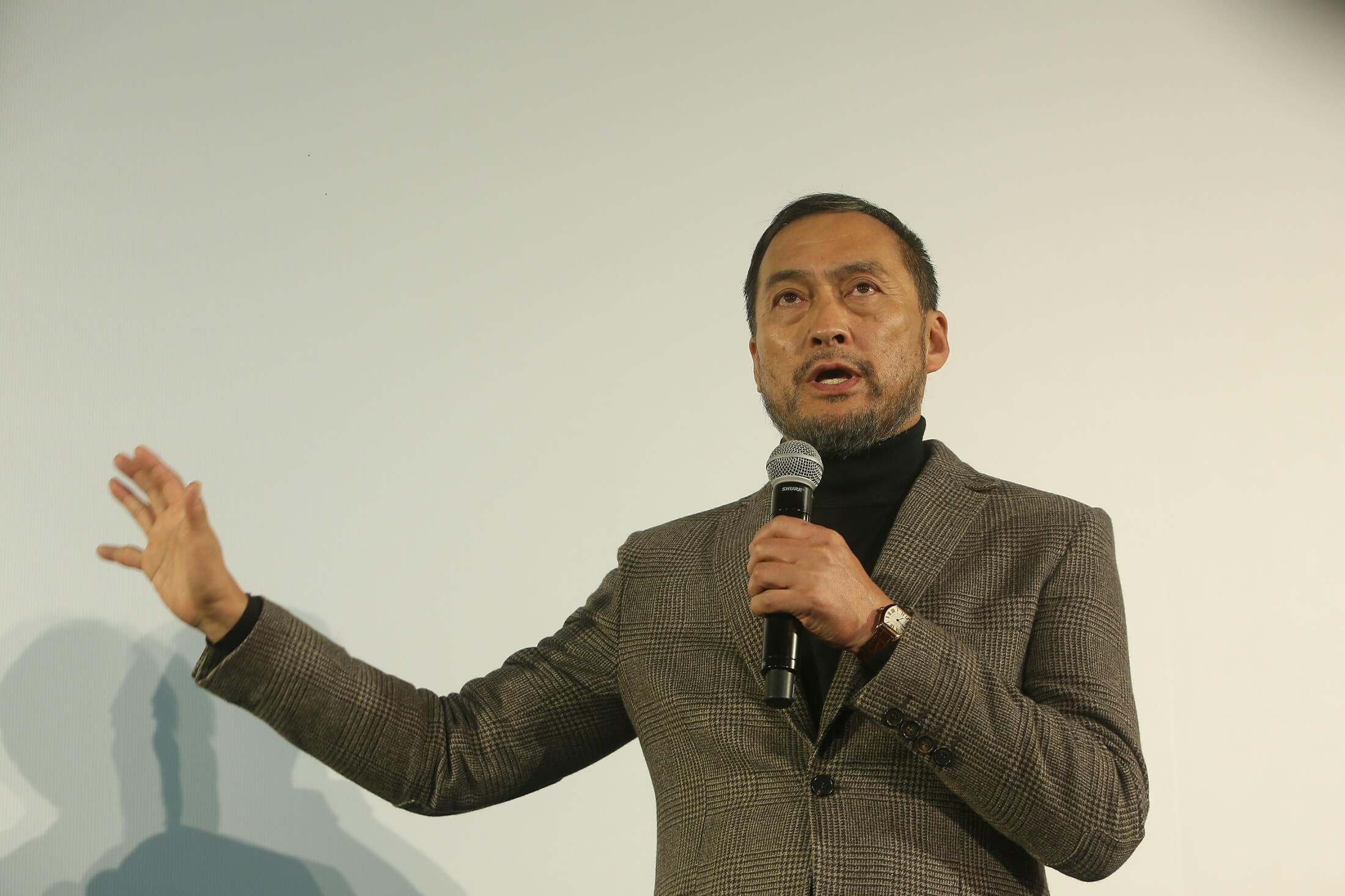
Watanabe spoke with strong words, saying: “There are many people whose lives were unfortunately changed by this incidentーpeople who cannot return to Fukushima. When we began filming, me and the rest of the cast and staff said that we would be unable to shoulder the extent of what actually happened, but we should dive head first into the movie, and understand even a little of what those people went through. From there we went and finished the film, and now we’re going around promoting it, starting with this city, and for that I am proud. This film absolutely enables one to feel connected to the future in some way.”
Director Wakamatsu followed up this comment. “We started this film project five years ago, and at last it’s finished. I am proud that we are able to say that as well as promote the film here in Fukushima. We set out to make this film faithfully and with sincerity.”
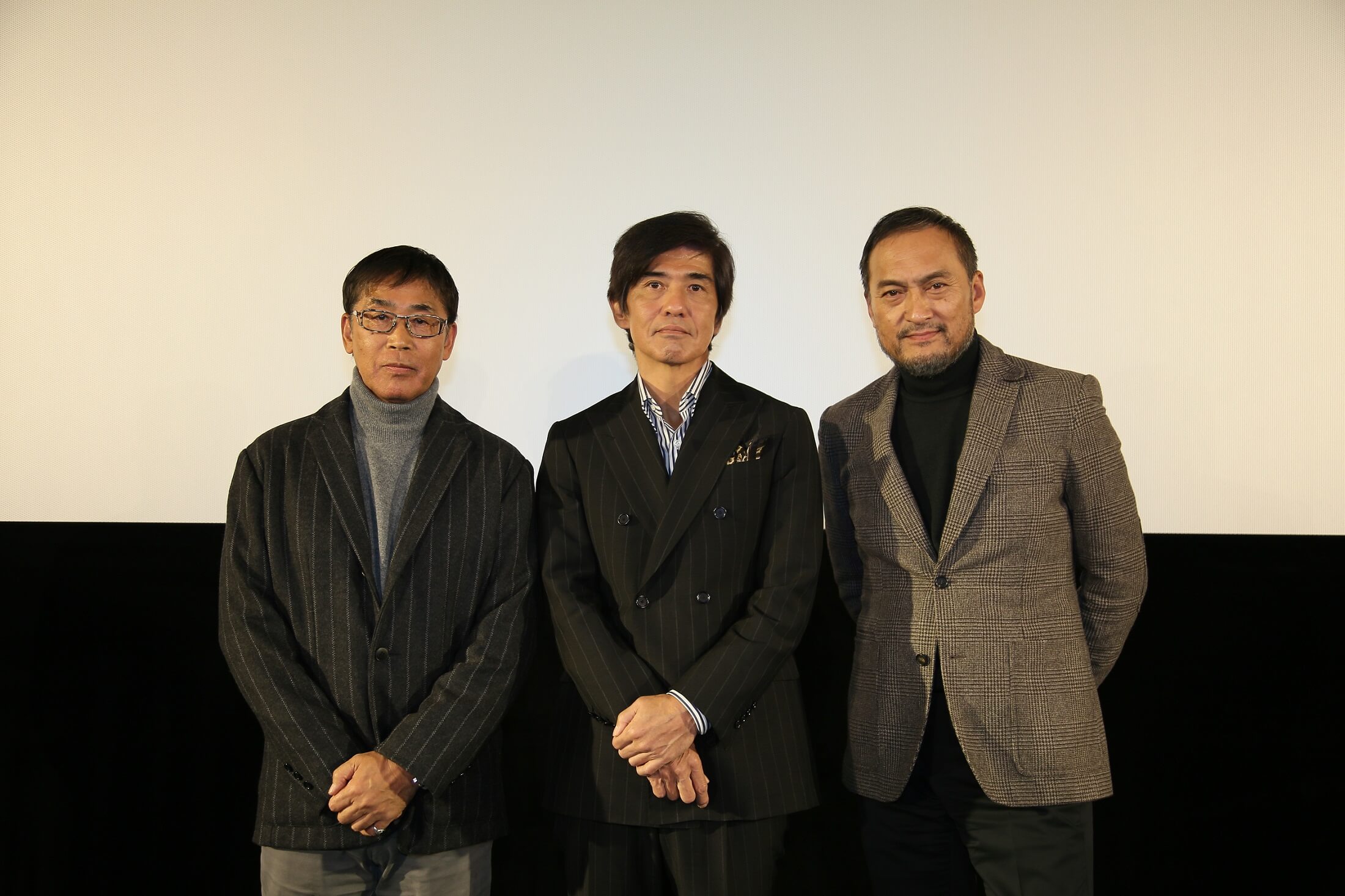
At the end of the talk, everybody gave their final comments. Satō said: “Let’s change this negative legacy into a different kind of legacy, even if just a little.” Watanabe said: “In my heart, I feel I hadn’t actively supported Fukushima until now. But, I believe I have been able to deliver that now to all of the people of Fukushima, doing what I’m best at. I hope it’s something you can get behind.”
After their closing statements, the cast and director were given a huge round of applause by the people of Fukushima.
©2020 “Fukushima 50” Production Committee
Information
Fukushima 50
Release Date: March 6, 2020
Based On: On the Brink: The Inside Story of Fukushima Daiichi by Ryūshō Kadota
Production: KADOKAWA
Distribution: Shochiku Company Limited, KADOKAWA
Official Website: fukushima50.jp
Kadokawa Pictures Website: https://www.kadokawa-pictures.jp/official/fukushima/
RELATED ENTRIES
-
GeGeGe no Kitaro Inspires New Daruma Doll Collection
06.September.2022 | ANIME&GAME / FASHION
Five popular characters from the popular horror fantasy series GeGeGe no Kitaro have been transformed into Daruma dolls! Two Daruma Land locations in Fukushima Prefecture have begun selling these curious items, with sales going live on August 26, 2022. Fans can choose from Kitaro, Neko Musume, Nezumi Otoko, Sunakake Babaa, or Konaki Jijii, and each Daruma doll features an entirely new image of each character’s face drawn by popular illustrator and creator Tsumupapa.




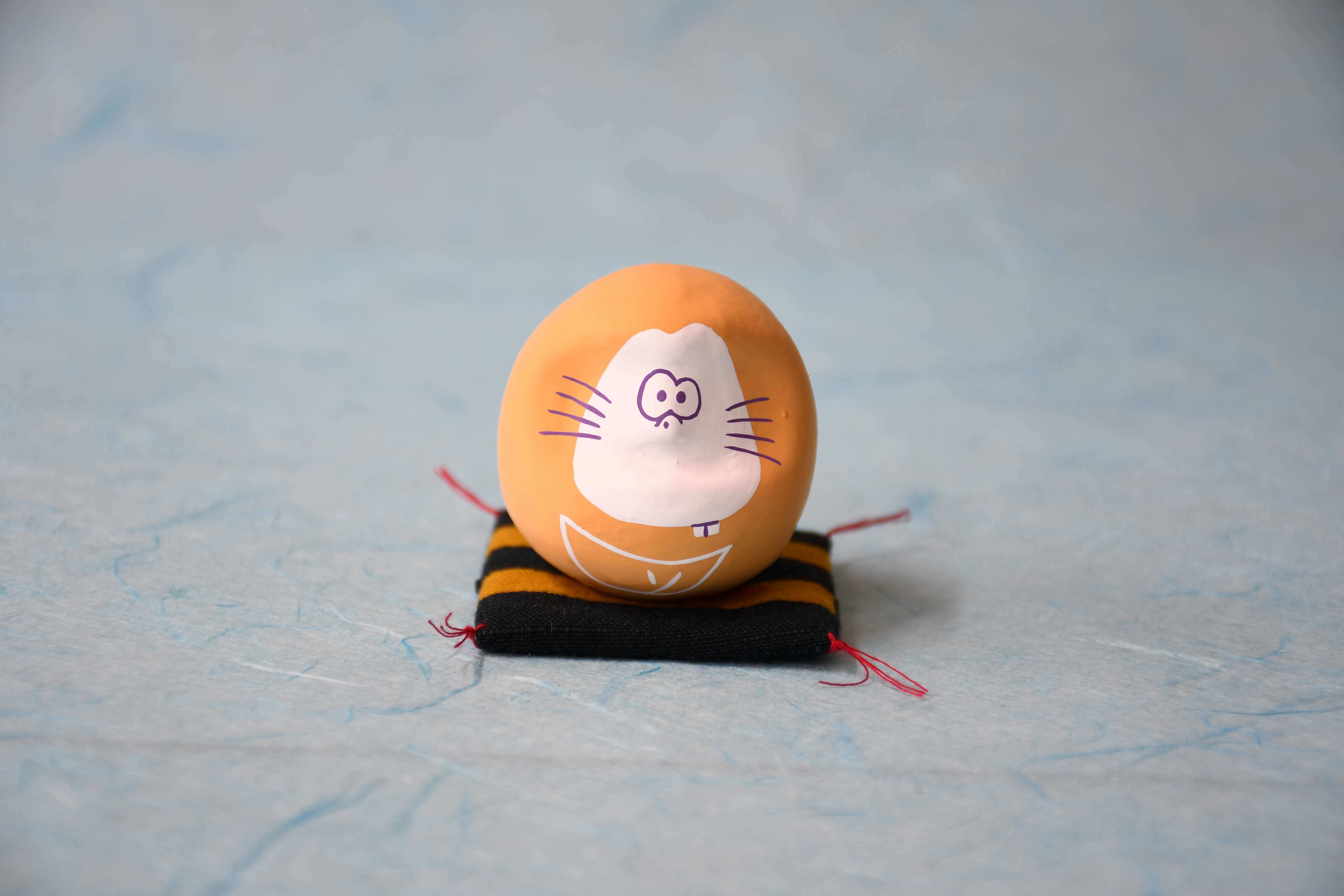
The company producing the dolls, Shirakawa Daruma, has been creating Daruma for over 300 years, and each authentic Japanese piece is produced by a craftsman adhering to traditional techniques. The palm-sized Daruma is around 45mm, perfect for displaying on a desk or shelf. Each comes with a cushion made of Aizu cotton, a well-known craft in Fukushima. These cushions were made to resemble Kitaro’s sleeveless kimono jacket from the series!
Information
Hey, Kitaro Daruma
Varieties: Kitaro, Neko Musume, Nezumi Otoko, Sunakake Babaa, Konaki Jijii
Release Date: August 26, 2022
Price: ¥1,760 (Tax Included)
Where to Buy:Daruma Land (30 Yokomachi, Shirakawa, Fukushima)
Daruma Land Koriyama, S-PAL 2F (195 Hiuchida, Koriyama, Fukushima)
Online Store: https://shirakawa-daruma.com/Official Site: https://www.heykitaro.com/
-
Kyary Pamyu Pamyu Collaborates with Ramen Chain Kourakuen in Fukushima
In conjunction with Kyary Pamyu Pamyu’s 31-show nationwide tour celebrating her 10th anniversary, the LOCAL POWER JAPAN Project was launched to energize Japan through the appeal of regional towns and cities. At each stop, Kyary collaborates with a local company to help bring more attention to smaller regions and businesses. The details of the artist’s collaboration project in Fukushima have been revealed ahead of Kyary’s performance there on May 20, 2022.

In Fukushima, Kyary is teaming up with Kourakuen, one of Japan’s leading ramen chains dating back to 1954. For this collaboration’s logo, Kourakuen’s logo has been transformed as an homage to Kyary’s 2012 song Fashion Monster. The fan-favorite track has appeared in ad campaigns and is a must-play for the singer at concerts!
Known for its tasty ramen and gyoza, Kourakuen has been a local favorite for almost 70 years. While the menu hasn’t changed too much since the early days, the chain is known for releasing some unique offerings, like chocolate Ramen on Valentine’s Day and natto miso ramen this spring.

For this collaboration, fans can grab a branded Ramen Monster Spoon, perfect for slurping up your favorite bowl of ramen.
Those who want to grab this item will want to head to the LOCAL POWER JAPAN Project online store by May 29. The spoon will also be sold in limited quantities at the Iwaki Aryan Arts & Culture Exchange Center Lobby in Fukushima on May 20.
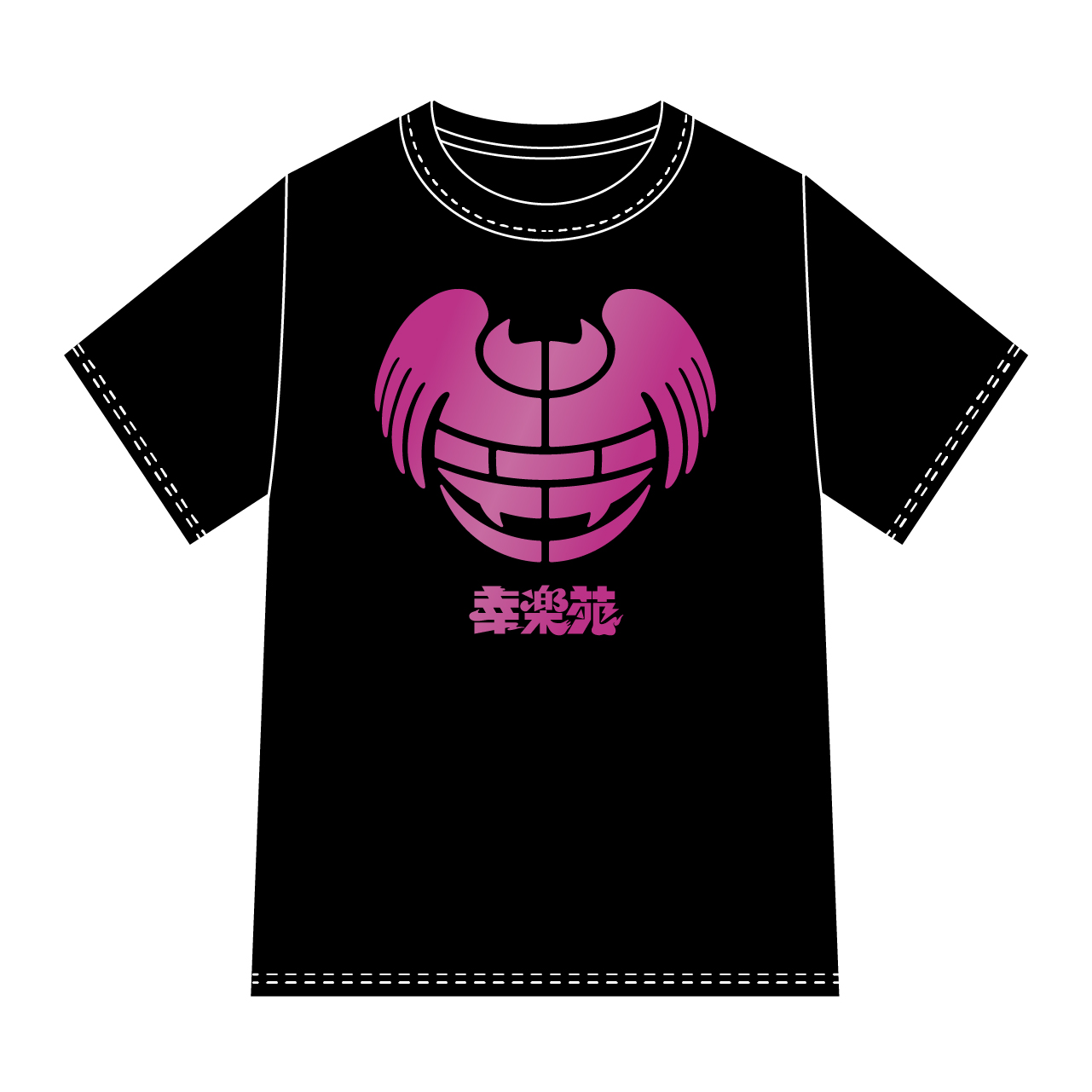

A collaborative T-shirt is also on sale featuring the new logo and the singer’s 10th-anniversary logo. It will be available on the LOCAL POWER JAPAN Project online store until May 29!
Information
Kourakuen (Fukushima) x LOCAL POWER JAPAN Project
Ramen Monster Spoon
Price: ¥1,000 (Tax Included)
Available: May 16 – May 29, 2022
Where to Buy:
LOCAL POWER JAPAN Project Online Shop
Available until May 29 at 23:59
https://store-localpowerjapan.com/May 20, 15:30~
Iwaki Aryan Arts & Culture Exchange Center LobbyCollaboration T-shirt
Price: ¥3,300 (Tax Included)
Where to Buy:
LOCAL POWER JAPAN Project Online ShopAvailable until May 29 at 23:59
https://store-localpowerjapan.com/
-
Miharu Papier-Mache Ultraman Masks Available in 33rd Fukushima Prefecture x BEAMS Collaboration
Fukushima Mono Mappu, a project run in collaboration with BEAMS JAPAN and Fukushima Prefecture, has revealed the contents of its 33rd installment! To promote the charms of Japan in collaboration with Fukushima Prefecture, BEAMS JAPAN has begun selling four new products, including specially-crafted Miharu Papiere-mache Ultraman masks.

Takashiba Deco Yashiki Daikokuya BEAMS JAPAN Special Products

Takashiba Deco Yashiki Daikokuya
Daruma dolls, self-righting dolls, and Akabeko toys are all known as pieces of Fukushima’s local culture. Takashiba Deco Yashiki brings together papier-mache craftsmen to create pieces of Miharu papier-mache, a traditional craft in Fukushima Prefecture for the last 300 years. BEAMS JAPAN has collaborated with a workshop that continues to make these local toys to this day to bring customers four styles of custom-made products. In honor of Fukushima-born Eiji Tsuburaya, the creator of Ultraman, the character’s mask has been cast in local Miharu papier-mache.
The Fukushima Mono Mappu 2022 pop-up shop is now open at the BEAMS JAPAN Shinjuku location! Visitors can buy special kitchenware along with local foods and beverages from Fukushima Prefecture, so be sure to visit!Information
Fukushima Mono Mappu Vol. 33 – Miharu Papiere-mache
To be Available during Fukushima Mono Mappu 2022 Collaboration
Release Date: March 15, 2022
Available at:
BEAMS JAPAN Shinjuku 1F
Address: 3-32-6 Shinjuku, Shinjuku-ku, Tokyo
BEAMS Official Online Shop: https://www.beams.co.jp/tag/220315_BJ_01Official Site: http://www.beams.co.jp/
-
16th Nishiaizu Art Village Exhibition Held in Historical Wooden School Building
04.October.2021 | SPOT
Held within a charming wooden school building, the 16th Nishiaizu Art Village Exhibition is now open, featuring a large collection of works by the general public. The event will be open until October 10, 2021.

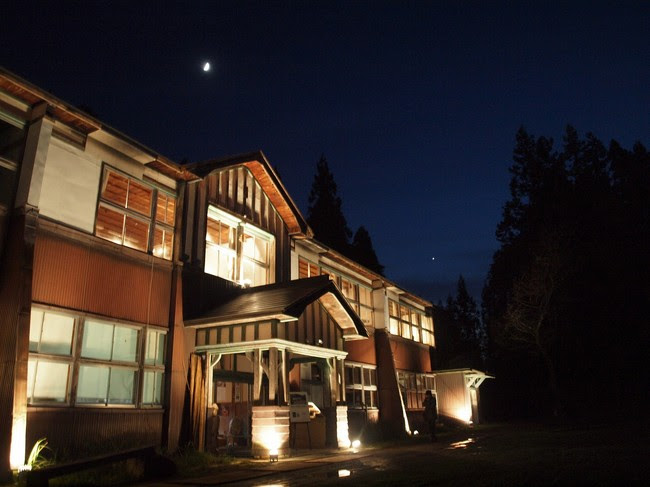
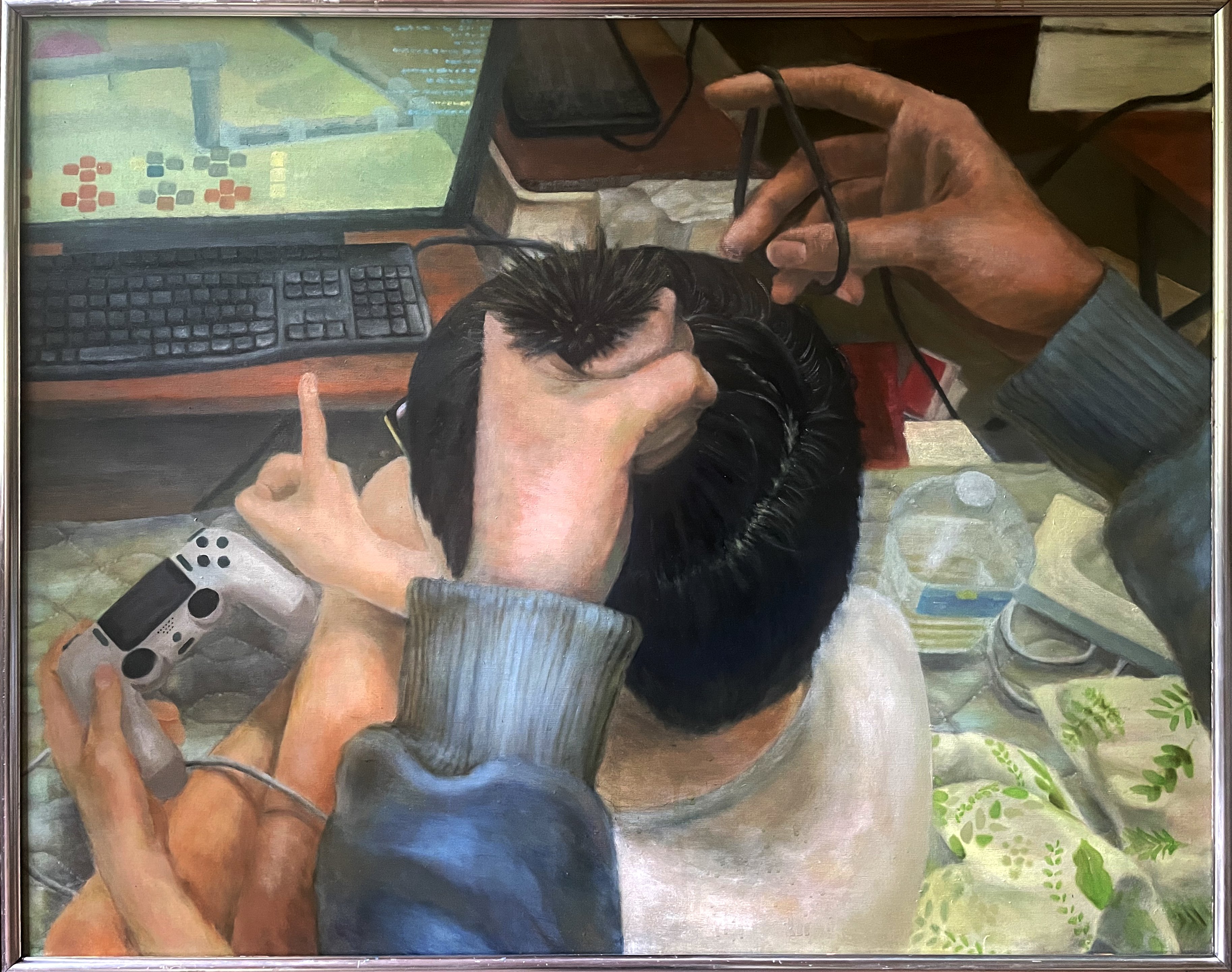
The school building in question was closed in 2002 and is now used as a base for a number of activities throughout the year, such as galleries, local cultural exchanges, and a headquarters for green tourism. The small town of Nishiaizu in Fukushima prefecture is known as the ‘front door’ ‘to the Iide Mountains, and over 86 percent of the area is composed of mountains and forests. What could be more inspiring for artistic endeavors?
In this year’s exhibition, 105 pieces are on display, with 57 contributed by the youth division and 48 from the general division. Young people and art lovers are invited to submit paintings and other works each year, promoting cultural exchange with visitors and highlighting talented creators from the area. At the event’s Maboroshi Restaurant, guests can enjoy curry, sandwiches, and other food and drinks on Saturday and Sunday during the exhibition period.
Information
16th Annual Nishiaizu Art Village Exhibition 2021
Running: Until October 10, 2021
Address: 5747 Kaminoharamichiue Shingo Oaza Sasagawa, Nishiaizu, Yama-gun, Fukushima
Hours: Monday and Tuesday, 10:00-17:00 (closed on national holidays)
Official Site: https://nishiaizu-artvillage.com/
-
haccoba Craft Sake Brewery Re-Releases Limited Edition Hanauta Drops Sake
01.June.2021 | FOOD / Uncategorized
haccoba launched its new sake brewery, haccoba -Craft Sake Brewery-, in February. It released its first product last Monday: a limited restock of Hanauta Drops, a sake that uses unrefined sake brewing methods which first originated in the Tohoku region.

Hanauta Drops

©︎ Puddle Inc.

Humulus lupulus hop
The sake crafted by haccoba uses the same techniques found in traditional Japanese sake brewing, including the rice and yeast used, but throws in a variety of fruits and herbs during the fermentation process. This upholds the traditional culture of Japanese brewery which was formerly carried out in homes while adding some fun flair. The brand plans to make its main product a fusion of hops used in beer making and classic Japanese crafting methods.
The secret ingredient that was so enjoyed in Japanese homes in the past when making sake is the humulus lupulus, a type of hop that makes this brewing process to making beer. Hanauta Drops uses the very same technique. It also enjoys a blend of yellow koji mold which has a sweetness similar to refined Japanese sugar found in rice, and white koji mold for a lemony tang. The result is a refreshing experience with every sip thanks to the bubbles that occur naturally during fermentation.
Information
Hanauta Drops
Released: May 24, 2021 (Limited Stock)
Price: ¥2,200 (Tax Included)
Buy: haccoba Online / Sake breweries in Japan
Product Details: https://haccoba.com/products/hanauta-drops
-
Chansey Pokémon Manhole Cover Designs Placed Around Fukushima Prefecture
15.August.2020 | ANIME&GAME / SPOT
As part of The Pokémon Company’s ongoing Poké Lid project to place Pokémon manholes around the country, Fukushima has welcomed new Chansey design lids in nine places across the prefecture.
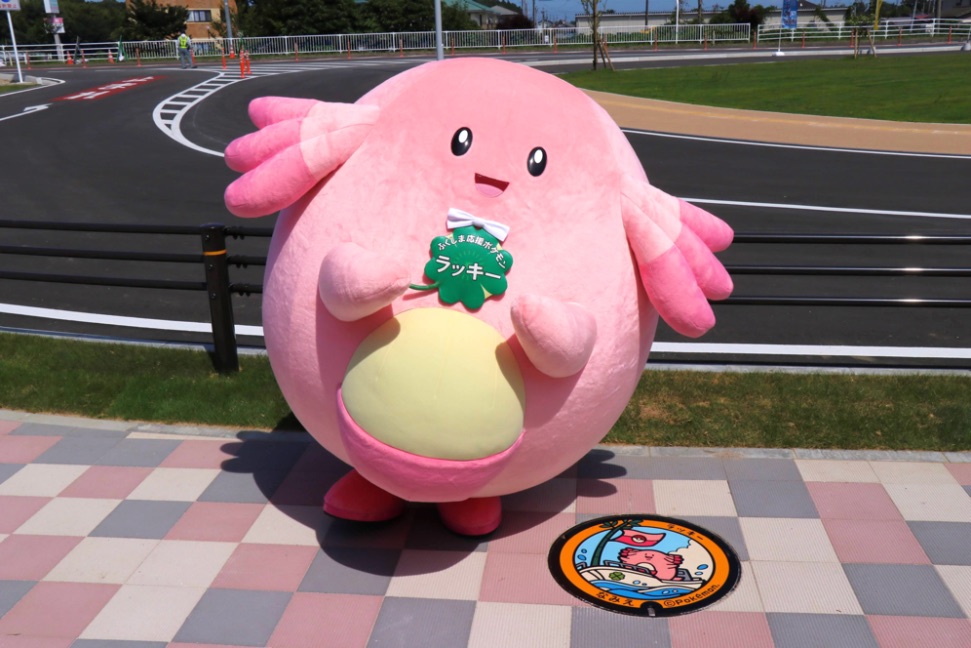
The first series of Poké Lids were place in the city of Ibusuki in Kagoshima Prefecture back in December 2018. They were Eevee lids, and saw designs for all of the Pokémon’s evolutions. All of the Poké Lids feature completely original Pokémon designs making each individual one the only one in the world. Until now, 87 had been placed across 7 prefectures in Japan, with more set to roll out throughout 2020.
Back in March of this year, The Pokémon Company laid down Sandshrew and Alola Sandshrew manholes in Tottori Prefecture.

In February last year, Chansey was appointed as the “Fukushima Support Pokémon” for Fukushima prefecture help to support the prefecture by promoting information about it around Japan. To date, Chansey has toured the tourist and sightseeing hot spots of Fukushima, performed at events, and worked as PR across the country.

There are nine Chansey Poké Lid designs, all of which feature original artwork. There are plans to make each of them PokéStops for the mobile game Pokémon GO in the future.
©2020 Pokémon. ©1995-2020 Nintendo/Creatures Inc./GAME FREAK inc.
Pokémon, ポケットモンスター and ポケモン are registered trademarks of Nintendo, Creatures Inc. and GAME FREAK inc. -
Go Skiing This Golden Week in Japan at Nekoma Ski Resort
25.March.2020 | SPOT
Nekoma Ski Resort, which is located on the northern slope of the Urabandai area, is holding a special spring ski event from March 30, 2020 called “Haru Nekoma ~Nekoma GO! GO! GO!”

The spring season at Nekoma Ski Resort is the time to enjoy the compacted snow berms, with lots of different kinds of berms to try out. So skiers can enjoy the snow berms that pile up in the early morning, the resort is open from from as early as 5:55, and there’s also snow lifts, so they can maximise their piste riding experience to the fullest. Skiers can enjoy the full view of Mount Bandaiーwhich is officially listed as one of the 100 most famous mountains in Japanーas well as Lake Inawashiro too as they hit the downhill ski trails.
Haru Nekoma ~Nekoma GO! GO! GO!
Running: March 30, 2020 – May 6, 2020
Times: [Weekdays] 7:30-15:00 / [Weekends & Public Holidays] 5:55-15:00
Lift Price: [1 Day Ticket] Adults ¥3,818 / Junior & High School Students ¥3,091 / Elementary School Students ¥1,909 (Before Tax)
Note: Dates and times subject to change depending on weather conditions
Ride the springtime pistes of Alts Bandai too

For the 2019-2020 season, you can ride the snow footpath that connects Nekoma Ski Resort to Alts Bandai. Go through the gate leading to it, walk through the Japanese beech trees for about 15 minutes, and you’ll arrive at the pistes in the deepest part of Alts Bandai which opens up to a spectacular view of Mount Bandai and the town of Inawashiro. Alts Bandai will be shut from March 29, but since there is still plenty of snow to ski down in the high-up pistes even in April, some of the lifts will still be operated. Enjoy a springtime walk and a springtime ski with the beautiful scenery before you with this special ski route.
Running: From March 20, 2020 until the snow melts
Gate Times: 10:00-13:30 (Last entries from Nekoma Ski Resort at 12:00)
Price: Free
Available Courses: Frozen 1, 2, 3 / Peak Lower 3 / Peak Lower 4
Note: A valid day ticket from Nekoma Ski Resort is required
Nekoma Terrace
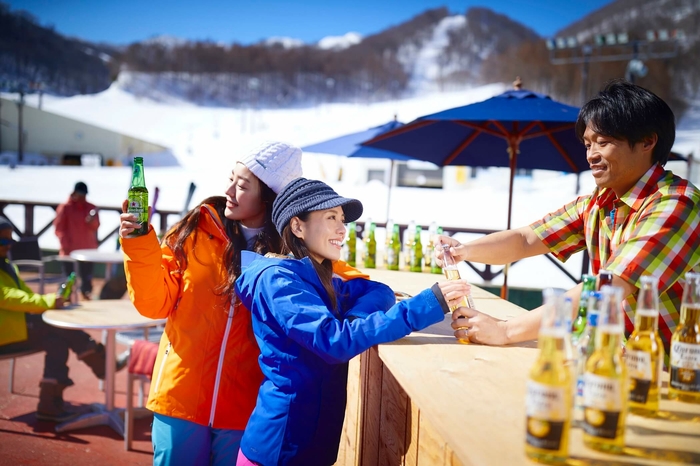
Bask in the springtime weather at the foot of the pistes in the Nekoma Terrace which has its own bar. After an early morning ski, take a break and relax at the terrace with a drink in hand and soak up the scenery around you as the temperature warms through the day.
Spring Nekoma Terrace
Time: 10:00-14:00
Price: Alcohol ¥454 / Soft Drinks ¥182 (Before Tax)
Location: Nekoma Ski Resort Centre House
Spring discount tickets are also available, which can also be used at Alts Bandaiーwhich has the biggest pistes in Japanーuntil March 29. Ride across 189 hectares and enjoy 26 courses.
Spring Discount Tickets
Available: February 1, 2020 – May 6, 2020
Valid: March 1, 2020 – May 6, 2020
Price: Adults (20-23 Years) ¥20,000 / Junior & High School Students ¥10,909 / Elementary School Students ¥10,000 (Before Tax)
Sold at: Alts Bandai / Nekoma Ski Resort Official Homepage / Alts Bandai and Nekoma Ski Resort sites
Information
Nekoma Ski Resort: https://www.nekoma.co.jp/en/
-
‘Fukushima 50’ International Trailer Released Showcasing Reality of the Earthquake, Tsunami and Nuclear Disaster
19.February.2020 | MOVIE
Fukushima 50 is an upcoming film based on the non-fiction book On the Brink: The Inside Story of Fukushima Daiichi by Japanese journalist Ryūshō Kadota. It will be released on March 6, 2020.

The film will discuss the Fukushima Daiichi nuclear disaster that occurred after the 9.0 magnitude Great East Japan Earthquake on March 11, 2011 which stands as the largest ever earthquake recorded in Japanese history.
The film’s title refers to the pseudonym given by the media to the 50 employees that remained on the site after the nuclear power plant disaster. It will show the reality that the group faced that only they knew from being inside the plant and in the face of death.
It was revealed last month that Fukushima 50 is set to premiere in 73 countries worldwide. Today, an official international trailer was released, which you can watch below.
The trailer begins from the moment the earthquake hit Japan back on that grave day of March 11, 2011, and showcases all that followed: the band of 50 faceless workers who risked everything to save their families, hometown, and country. The international trailer is different from the Japanese trailer, which focused more on the human aspect. This trailer also does that, but emphasises the tension and risk involved. Though this is a Japanese film, it has that Hollywood feel to it with its realistic setーincluding the official featuring of the United States Armed Forcesーas well as its use of VFX.
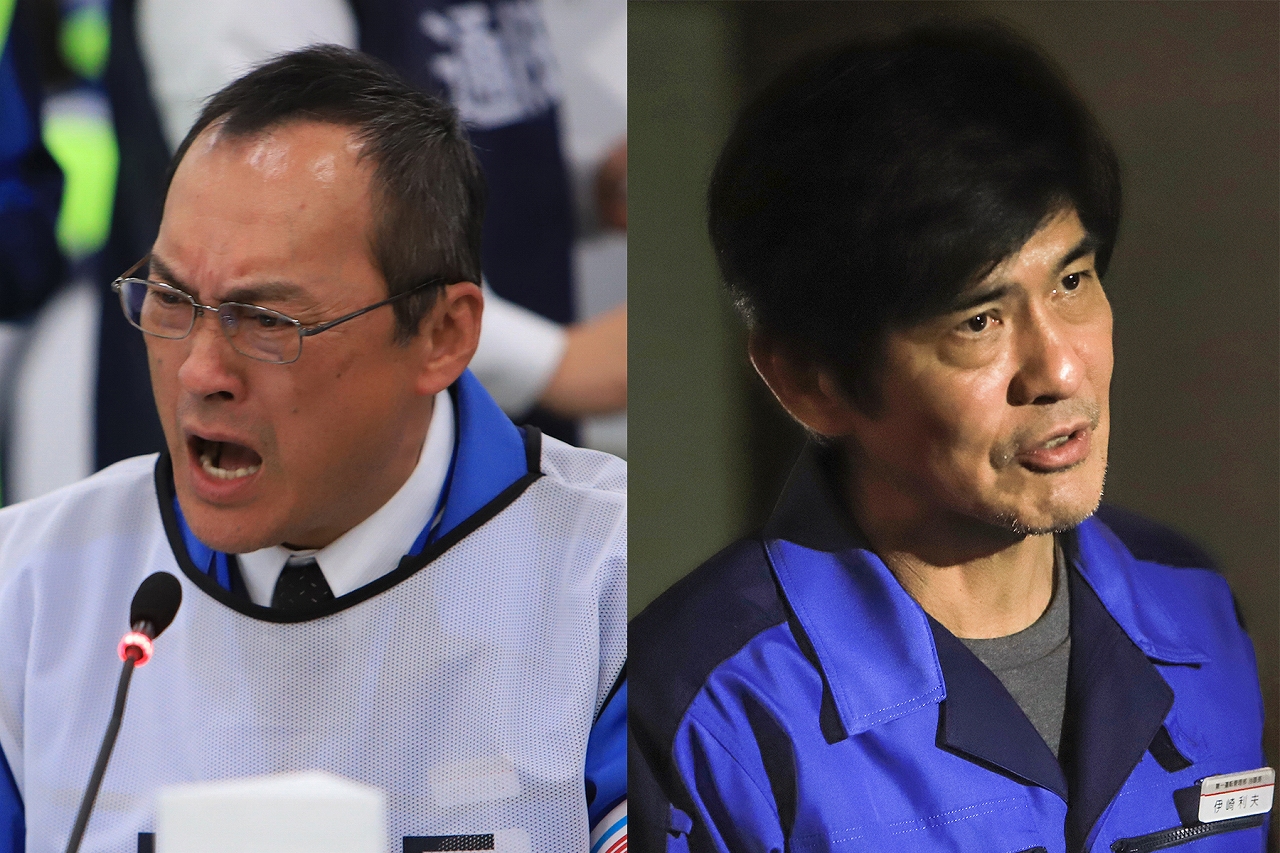
International publishers have called the film impacting and important, and have drawn comparisons to HBO’s Chernobyl (2019). Learn the truth about the Fukushima Daiichi nuclear disaster when it releases worldwide on March 6, 2020.
Information
Fukushima 50
Release Date: March 6, 2020
Based On: On the Brink: The Inside Story of Fukushima Daiichi by Ryūshō Kadota
Production: KADOKAWA
Distribution: Shochiku Company Limited, KADOKAWA
Official Website: fukushima50.jp
Kadokawa Pictures Website: https://www.kadokawa-pictures.jp/official/fukushima/
-
‘Fukushima 50’ Film About Nuclear Disaster to be Released in 73 Countries Worldwide
27.January.2020 | MOVIE
Fukushima 50 is an upcoming film based on the non-fiction book On the Brink: The Inside Story of Fukushima Daiichi by Japanese journalist Ryūshō Kadota. It will be released on March 6, 2020.
The film will discuss the Fukushima Daiichi nuclear disaster that occurred after the 9.0 magnitude Great East Japan Earthquake on March 11, 2011 which stands as the largest ever earthquake recorded in Japanese history.
The film’s title refers to the pseudonym given by the media to the 50 employees that remained on the site after the nuclear power plant disaster. It will show the reality that the group faced that only they knew from being inside the plant and in the face of death.
Members from the film’s cast including Kōichi Satō, Ken Watanabe, Naoto Ogata, Mitsuru Hirata, Masato Hagiwara, Shiro Sano, Narumi Yasuda, as well as the director Setsurō Wakamatsu, all attended the film’s world premiere held at Tokyo International Forum on Sunday (January 26).

During the talk session at the world premiere, Sato was asked about his current mental state in relation to the film finally being released, to which his response began with mentioning the film having been premiered at Koriyama Theatre in Fukushimaーthe prefecture in Japan where the nuclear disaster struckーas part of a campaign where he and Watanabe visited numerous locations across Fukushima.
He said: “We premiered this film in Fukushima the other day as part of a campaign. I knew we had to begin in Fukushima, and having this film seen by the people of Fukushima was a terrifying thing. Before the scene with the tsunami was shown, we had to show a trigger warning that said, ‘Visual imagery of a tsunami is about to be shown.’ If we hadn’t done that, we wouldn’t have been able to show it to the people. They had to watch very distressing scenes in a dark movie theatre, so it was scary to have them see it, like victims of the disaster, people who have friends and family who were victims, the people of Fukushima and that of Miyagi, so it was important we overcame that. When I watched this film to the end, I knew it would be one that would go down on record and remain in peoples’ memory. Fukushima was the first place I took that full knowledge to. And today, the people of Tokyo will see it, and after that I’ll take those thoughts around the rest of the country.”


Next to speak was Watanabe, who also spoke about the campaign. “I interviewed someone who had been a high school student in Koriyama at the time of the disaster and had gone on to become a TV announcer. The words he said to me gave me confidence to be able to put this film out there. He said, ‘At first, my body wouldn’t stop trembling, and even though I knew I had to pull through to the end, my heart felt like it was going to break partway through. [At the time,] there was no electric, and I couldn’t get to a phone or computer. There was a lot of different news flying around [about what happened,] but seeing this film has given me the chance to see what it was really happened. And I thank you for that.”
The film’s director Wakamatsu followed up on Sato and Watanabe being involved in the campaign, saying: “The two of you were there for the people of Fukushima. You gave your time to talk to them, which made some people cry before the film started. When they had finished watching the film, it made me happy hearing them say, ‘Thank you for making a film like this.'”
Sato was also questioned on the atmosphere on set during the rigorous film shoot. “The movie is filmed in chronological order of how events unfolded, so me and the other members in the main control room had a lot of thoughts while on site. As each scene came together, I became very aware of how it felt like we were all in the same situation. I felt like we were one, in a different way to any other film.”

Shiro Sano, who plays the role of the Prime Minister at the time of the disaster, said: “People often say to me, ‘So you’ve accepted this role this time.’ I wonder why they say things like that. <laughs> I have all the information now so I can talk about what happened during that time, but at the time I didn’t understand any of the information, or how I should judge the situation. If the Prime Minister at the time had stayed motionless in Tokyo without acting, he would have been criticised. But honestly, if we don’t look at the actual site, we can’t make judgements.”
After each cast and staff member gave their comments, the MC announced that Fukushima 50 is set to be released in 73 countries worldwide.

At the end of the panel, Watanabe said: “If you’re wondering why the title of the film is written in English, it’s so after we have delivered this film from Koriyama in Fukushima to Tokyo, and then the rest of the country, it’s heading out there around the world. I have no doubts that those who watch this film will feel some kind of wonderful power.”
Sato also gave a closing statement: “Disasters are things that leave deep scars and after-effects. Our small contribution to that negative legacy should serve as a baton to pass it on to tomorrow, and into the future. I ask all of you to pray for that negative legacy to be changed into a legacy for tomorrow.”
©2020 “Fukushima 50” Production Committee
Information
Fukushima 50
Release Date: March 6, 2020
Based On: On the Brink: The Inside Story of Fukushima Daiichi by Ryūshō Kadota
Production: KADOKAWA
Distribution: Shochiku Company Limited, KADOKAWA
Official Website: fukushima50.jp
Kadokawa Pictures Website: https://www.kadokawa-pictures.jp/official/fukushima/
-
United States Armed Forces Stars in the Upcoming Japanese Film ‘Fukushima 50’
19.November.2019 | MOVIE
Fukushima 50 is an upcoming film based on the non-fiction book On the Brink: The Inside Story of Fukushima Daiichi by Japanese journalist Ryūshō Kadota. It will be released sometime in 2020.
The film will discuss the Fukushima Daiichi nuclear disaster that occurred after the 9.0 magnitude Great East Japan Earthquake on March 11, 2011 which stands as the largest ever earthquake recorded in Japanese history.
The film’s title refers to the pseudonym given by the media to the 50 employees that remained on the site after the nuclear power plant disaster. It will show the reality that the group faced that only they knew from being inside the plant and in the face of death.

It was revealed today that the United States Armed Forces (USAF) is involved with the shooting of the film, making it their first ever time being featured in a Japanese film. When the incident took place back in 2011, the USAF launched “Operation Tomodachi” to provide disaster relief to Japan. On January 28 this year, the first ever movie shoot took place at Yokota Air Base, a joint air base between the USAF and Japan Air Self-Defense Force (JASDF), for Fukushima 50.
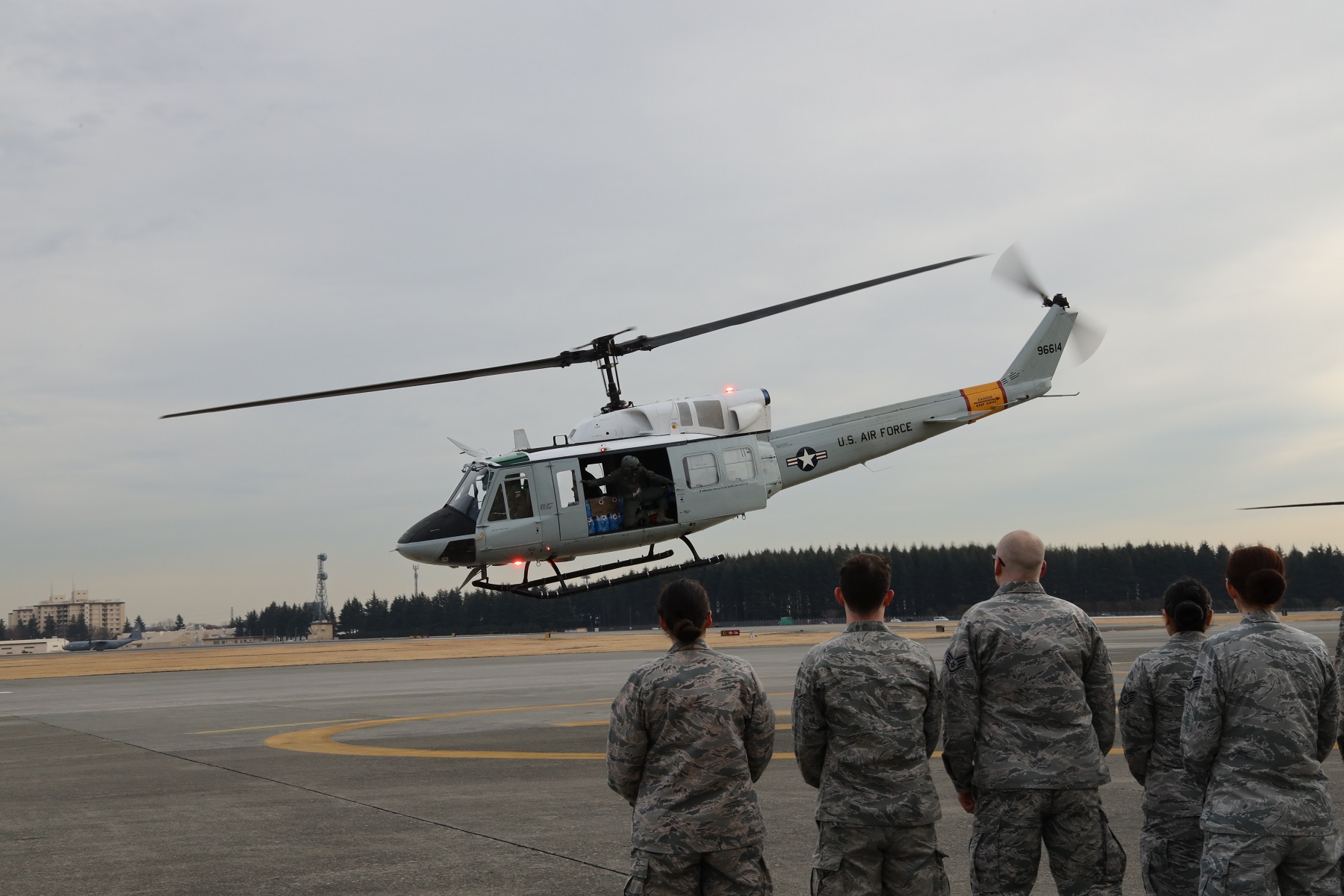
Various locations across the air base were used to film scenes, such as a war council room, and a real UH-1 helicopter was flown for a scene in which the USAF heads towards Tohoku to lend support. Permission was required from the United States Department of Defense (the Pentagon) for the shoot, but because there has been no such negotiations in the Japanese film industry before, it was initially rejected. But thanks to help and cooperation from associates in the Embassy of the United States in Tokyo, who were able to demonstrate that the film would be portraying actual soldiers in the US military who were involved with Operation Tomodachi, and after long negotiations about ensuring security on the US side, permission was finally granted.

Daniel Kahl, an American TV personality in Japan, will play the part of Johnny, a military officer of the 374th Airlift Wing at Yokota Air Base. Johnny has connections to Fukushima, and viewers will get to see a more serious Daniel Kahn in action. A multitude of real US military officers will also feature as extras at the base.

To recreate the scene in which the Japanese prime minister at that time went on an emergency visit to Fukushima Daiichi aboard the Japanese Self-Defense Force helicopterーone for transporting officialsーthe Eurocopter EC225 Super Puma will be used, a helicopter that is normally used for transporting national and international people of great importance, such as those in the Japanese imperial family and the prime minister.
There is also a scene with the CH-47JA which was used for hosing down the tops of buildings. The scene will feature actual team members who were part of that operation at the time.
The production team have gone all out to make the film as faithful a realistic recreation as possible, including the set such as the Fukushima Daiichi central control room, the disaster prevention office and more. The team hope to showcase to the world what actually happened during this global disaster.
Daniel Khan expressed his gratitude to everyone involved in the film, and extended his thanks to all of the active military members who featured as extras in the film. He also spoke about how much fun he had on set, as well as it having been a valuable experience for him after people were kind enough to answer any questions he had. Since the disaster, Khan has made countless trips to Tohoku to listen to people’s stories.
The USAF also released a statement on the video shoot, stating how despite it being under difficult circumstances, the troops worked hard so that they could be involved.
© 2020 “Fukushima 50” Production Committee
Information
Fukushima 50
Release Date: March 6, 2020
Based On: On the Brink: The Inside Story of Fukushima Daiichi by Ryūshō Kadota
Production: KADOKAWA
Distribution: Shochiku Company Limited, KADOKAWA
Official Website: fukushima50.jp
Kadokawa Pictures Website: https://www.kadokawa-pictures.jp/official/fukushima/
-
On Set Photo Released For Fukushima Daiichi Nuclear Disaster Film ‘Fukushima 50’
09.July.2019 | MOVIE
Fukushima 50 is an upcoming film based on the non-fiction book On the Brink: The Inside Story of Fukushima Daiichi by Japanese journalist Ryūshō Kadota. The film will discuss the Fukushima Daiichi nuclear disaster that occurred after the 9.0 magnitude Great East Japan Earthquake on March 11, 2011 which stands as the largest ever earthquake recorded in Japanese history. It will be released sometime in 2020.
A shot taken from the film has been released and features actor Kōichi Satō, who plays the part of Toshio Izaki who was the shift supervisor at the Fukushima Daiichi and Daini Nuclear Power Plants, and Ken Watanabe, who plays the role of Masao Yoshida, the plant manager during the Fukushima Daiichi nuclear disaster. It is important to note that this film shot was released on July 9, the same date that Masao Yoshida passed away in 2013.
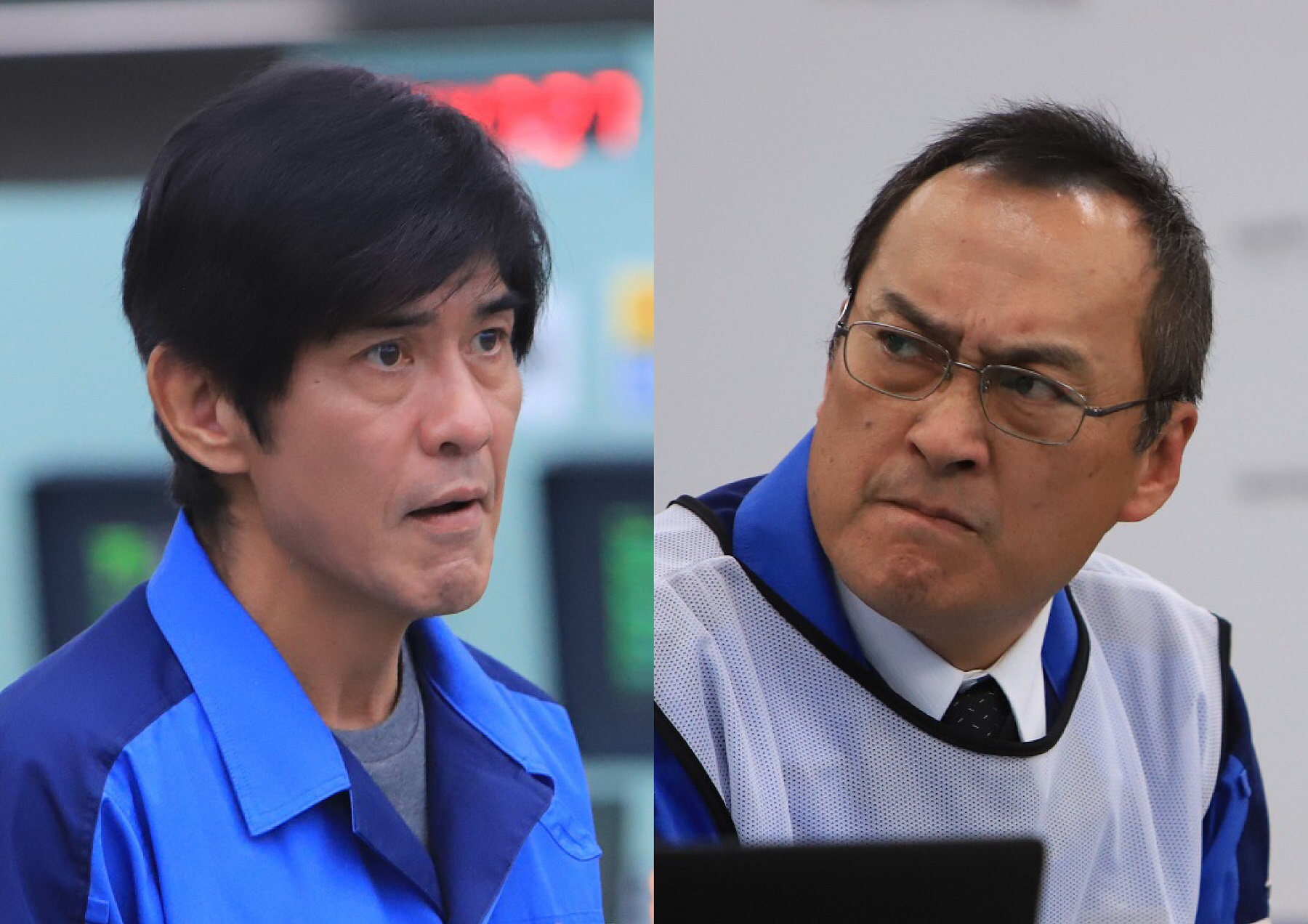
The images are taken from the unnerving scene right after the earthquake hit. Toshio Izaki (Left), played by Kōichi Satō, is in the central control room instructing counter-measures and looking carefully to see if anything is wrong after an emergency was instructed for the Daiichi and Daini plants. Masao Yoshida (Right), played by Ken Watanabe, is trying to come up with a plan after receiving the grave news. He is located in the quake-proof emergency headquarters which was built in Daiichi in 2010. Both photos are a chilling insight into the disaster.
It has been eight years since the earthquake struck Japan and affected its nation and which resonated with people across the globe. Fukushima 50 will deliver a drama unprecedented in the history of Japanese cinema.
©2020 “Fukushima 50” Production Committee
Information
Fukushima 50
Release Date: 2020
Kadokawa Pictures Website: https://www.kadokawa-pictures.jp/official/fukushima/
-
Goldfish Festival, Fireworks And Much More Family Fun at Aquamarine Fukushima
01.July.2019 | SPOT
During the summer holiday period between July and September, Aquamarine Fukushima is holding a range of events and supporting children to learn about marine life independently. Come join in the festival fun with goldfish scooping games, quoits, and much more. There will also be a fair from August 11 to 15.
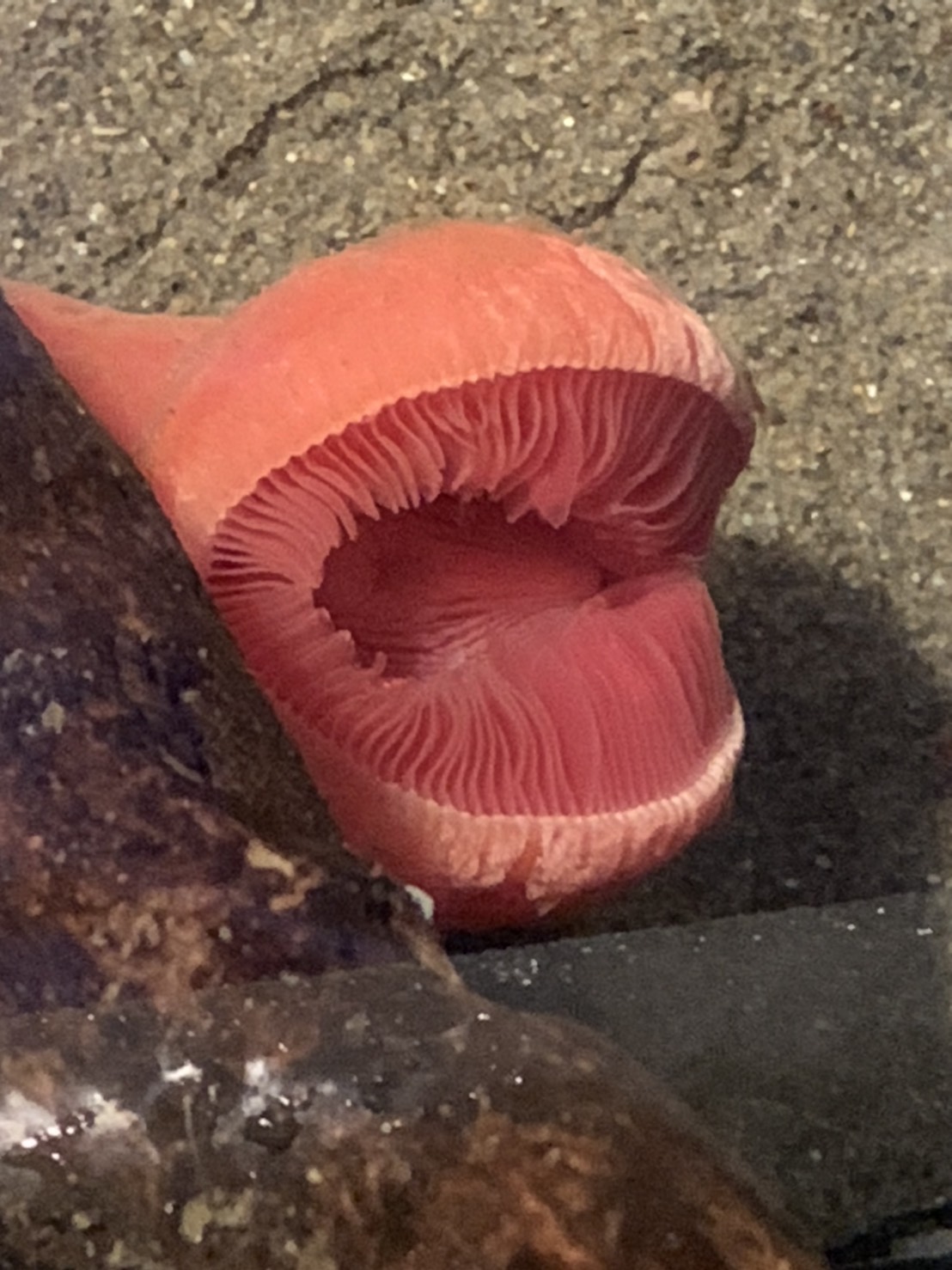
Aquamarine Fukushima Rare Creatures Picture Book <Complete the pictures!>
Dates: July 13 ー September 1
Aquamarine Fukushima is displaying rare creatures and ecological systems. The children can write the name of the new creatures they discover in their own picture book. Once they have completed the picture book, it will be an original record of discoveries. As the children record the features of the animals and other organisms they discover, adults will also find this information beneficial when looking around the exhibitions.
How to take part: Pick up an application form at the entranceway on floor 1 of the aquarium main building (Honkan). The answers will all be distributed in one place. (Subject to change).
Summer Aquamarine Fukushima: Children’s Answer Room
Open: July 20 ー September 1
Here, all the answers to the children’s puzzles about Aquamarine life are presented in panels and explained in easy terms. Along with the picture book where the children can record interesting life forms, this is the perfect way to support independent exploration.
Goldfish scooping and Fun Fair
You can purchase goldfish that were bred at the aquarium, or catch them yourself at the goldfish scooping area. There is also a games corner where you and your children can enjoy a range of fun activities such as quoits.

The goldfish building, which just opened last year, will be bringing back its 60cm-large Goldfish Nebuta lantern. To raise spirits during Japan’s O-bon lantern festival, the aquarium will be open for much longer so that a lantern event can be held in the evening.
Iwaki Traditional Vegetable Marché
Open: August 17 ー 18 (11:00 ー 14:00)
Head to the Aquamarine Aguri located outside Aquamarine Fukushima to purchase everyday vegetables as well as Japanese vegetables that have been grown through the cooperation of Iwaki farmers and Iwaki city. The traditional Iwaki marché sells mainly traditional summer vegetables such as okuimo potatoes, yardlong beans, beefsteak plants, kojiroi cucumbers, and much more. From local vegetables to healthy goods, everything is produced at Aquamarine Fukushima.
Iwaki Fireworks Festival

Enjoy the sight of fireworks soaring through the sky before your very eyes from the Aquarium grounds. This large-scale fireworks event will run until 9 pm on August 3.
Running: August 11 ー 15 (8pm) .
※ Last entries: Up to 1hr before closing time.
Come visit Aquamarine Fukushima for a perfect fun-filled day with the family!
Information
Goldfish Display and Sales
Running: August 11 ー 12 (Monday, national holiday)
Times: 10:00 ー15:00、16:30 ー19:00
Goldfish Scooping/ Fair
Running: August 11 ー 15
Times: 16:30 ー19:00
The goldfish scooping event will end once all fish have been caught.
Water Yo-Yo Fishing, Quoits, Fishing Games, Barbecue Skewers: ¥300 per turn.
Aquamarine Fukushima
Address: Tatsumicho-50 Onahama, Iwaki, Fukushima
Official Website: https://www.aquamarine.or.jp/




